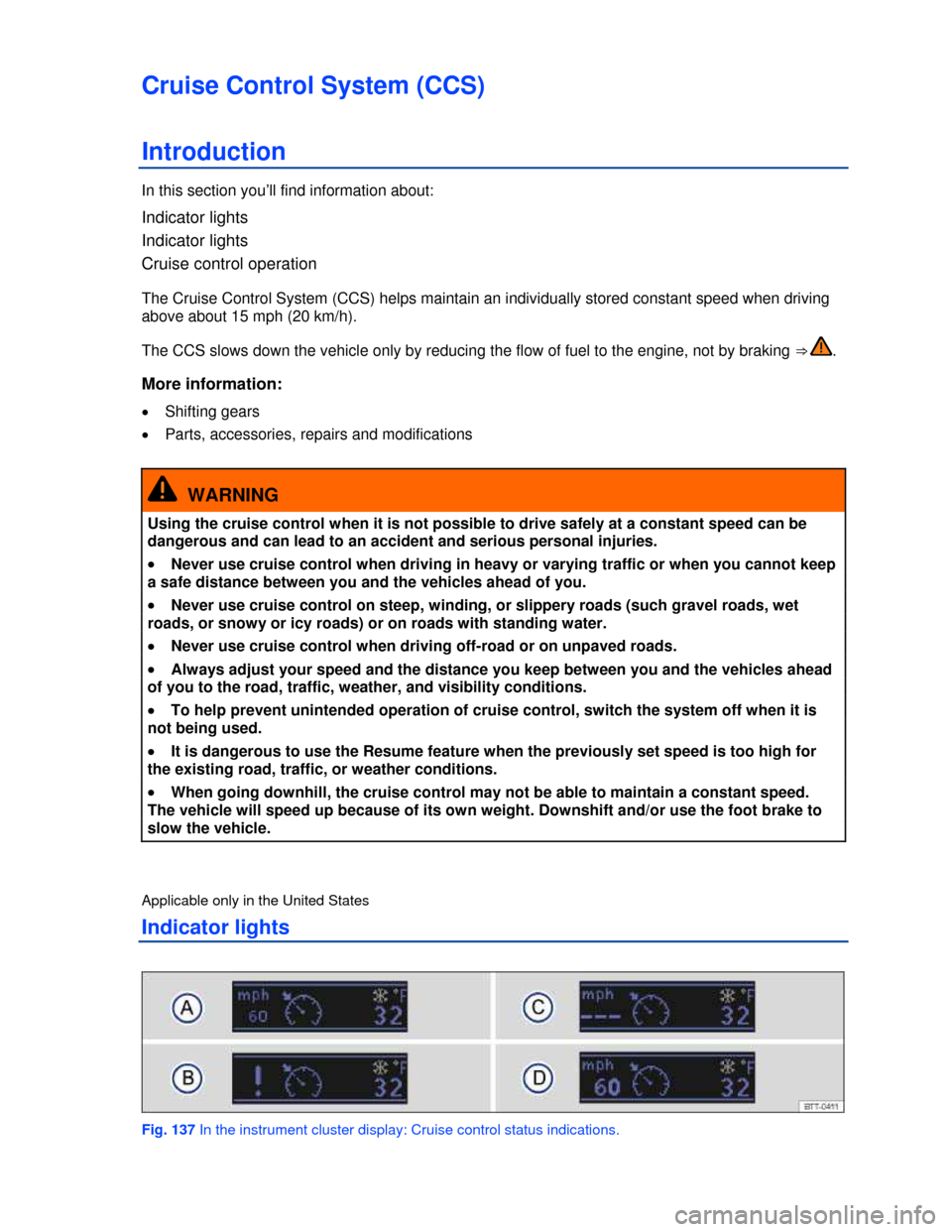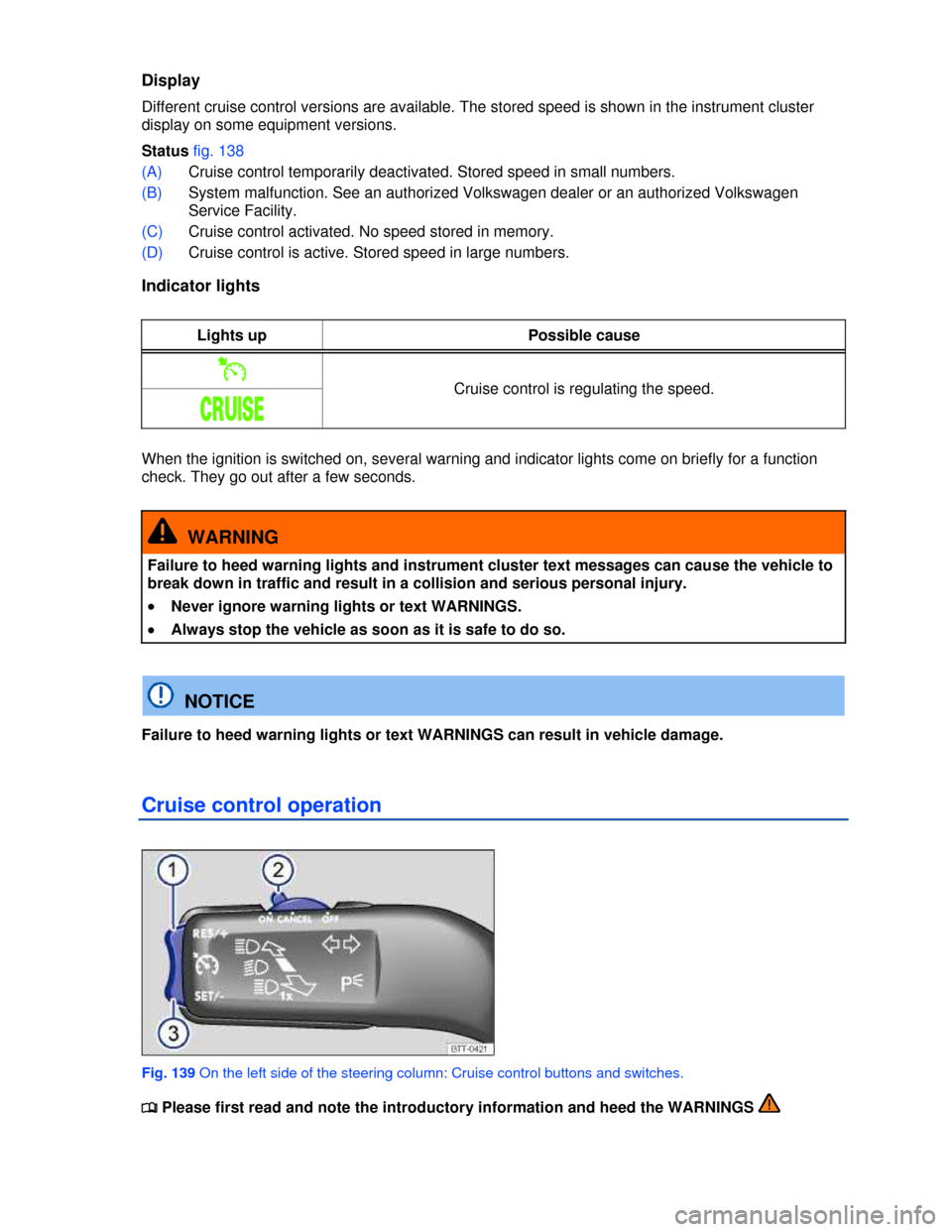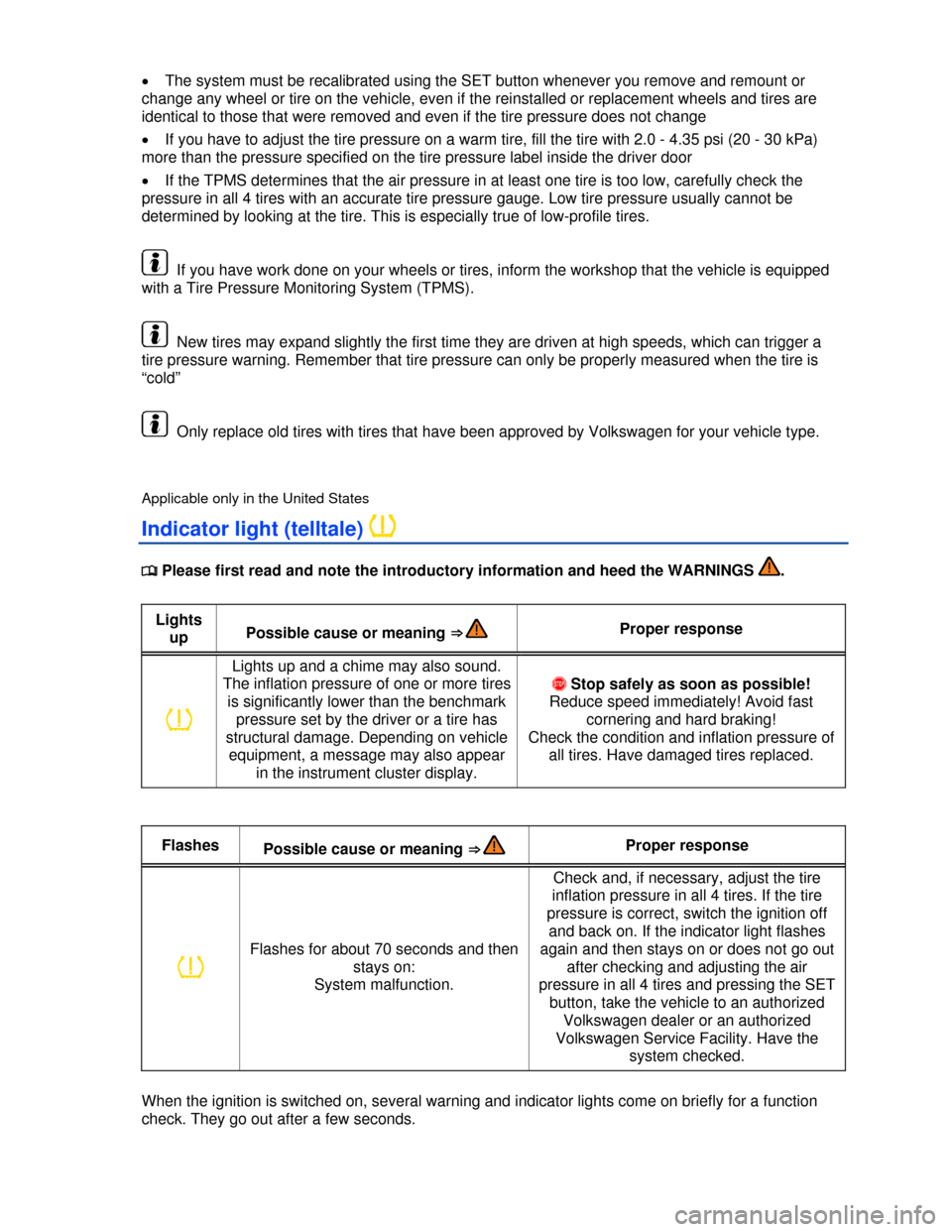Page 193 of 319

To help make it more difficult to steal your vehicle, you should always make sure the steering column
is locked before leaving the vehicle.
Electronic steering column lock
Vehicles with Keyless Access: The steering column is locked if the driver door is opened with the
ignition switched off. The vehicle must be standing still and the transmission must be in Park (P) on an
automatic transmission vehicle.
If the driver door is opened before the ignition is switched off, the electronic steering column lock is
activated only after the vehicle has been locked with the vehicle key or via the sensor in the door
handle.
Mechanical steering column lock
Vehicles without Keyless Access: The steering column is locked if the vehicle is stationary and the
vehicle key is removed from the ignition switch.
Engaging the steering column
lock
Disengaging the steering column
lock
Parking the vehicle Turn the steering wheel slightly to
take pressure off the steering
column lock.
Remove the vehicle key. Insert the vehicle key into the
ignition switch.
Turn the steering wheel slightly until
you hear the steering column lock
engage.
Hold the steering wheel in this
position and turn the ignition switch.
Power steering
Power steering automatically adjusts to driving speed, steering torque, and the steering angle of the
wheels. Power steering works only when the engine is running.
If power steering is reduced or lost completely, it will be much harder to steer and control the vehicle.
Counter-steering assistance
Counter-steering assistance is part of Electronic Stability Control (ESC). This feature makes it easier
for the driver to control the vehicle in difficult situations. For example, if you have to brake hard on a
surface that provides uneven traction, the vehicle could pull to the right or left. ESC detects this
situation and helps the driver counter-steer with additional steering power ⇒ .
WARNING
The counter-steering assistance in ESC can do no more than help the driver steer in difficult
situations. The driver must still control the vehicle. The vehicle does not steer by itself with
this feature!
NOTICE
If the ignition is off, the steering column lock will engage and the vehicle cannot be steered.
For this reason, you must leave the ignition on when going through an automatic car wash, for
example, so that the wheels will still steer.
Page 196 of 319

Cruise Control System (CCS)
Introduction
In this section you’ll find information about:
Indicator lights
Indicator lights
Cruise control operation
The Cruise Control System (CCS) helps maintain an individually stored constant speed when driving
above about 15 mph (20 km/h).
The CCS slows down the vehicle only by reducing the flow of fuel to the engine, not by braking ⇒ .
More information:
�x Shifting gears
�x Parts, accessories, repairs and modifications
WARNING
Using the cruise control when it is not possible to drive safely at a constant speed can be
dangerous and can lead to an accident and serious personal injuries.
�x Never use cruise control when driving in heavy or varying traffic or when you cannot keep
a safe distance between you and the vehicles ahead of you.
�x Never use cruise control on steep, winding, or slippery roads (such gravel roads, wet
roads, or snowy or icy roads) or on roads with standing water.
�x Never use cruise control when driving off-road or on unpaved roads.
�x Always adjust your speed and the distance you keep between you and the vehicles ahead
of you to the road, traffic, weather, and visibility conditions.
�x To help prevent unintended operation of cruise control, switch the system off when it is
not being used.
�x It is dangerous to use the Resume feature when the previously set speed is too high for
the existing road, traffic, or weather conditions.
�x When going downhill, the cruise control may not be able to maintain a constant speed.
The vehicle will speed up because of its own weight. Downshift and/or use the foot brake to
slow the vehicle.
Applicable only in the United States
Indicator lights
Fig. 137 In the instrument cluster display: Cruise control status indications.
Page 198 of 319

Display
Different cruise control versions are available. The stored speed is shown in the instrument cluster
display on some equipment versions.
Status fig. 138
(A) Cruise control temporarily deactivated. Stored speed in small numbers.
(B) System malfunction. See an authorized Volkswagen dealer or an authorized Volkswagen
Service Facility.
(C) Cruise control activated. No speed stored in memory.
(D) Cruise control is active. Stored speed in large numbers.
Indicator lights
Lights up Possible cause
�% Cruise control is regulating the speed.
�#�2�5�)�3�%
When the ignition is switched on, several warning and indicator lights come on briefly for a function
check. They go out after a few seconds.
WARNING
Failure to heed warning lights and instrument cluster text messages can cause the vehicle to
break down in traffic and result in a collision and serious personal injury.
�x Never ignore warning lights or text WARNINGS.
�x Always stop the vehicle as soon as it is safe to do so.
NOTICE
Failure to heed warning lights or text WARNINGS can result in vehicle damage.
Cruise control operation
Fig. 139 On the left side of the steering column: Cruise control buttons and switches.
�
Page 200 of 319
Tire Pressure Monitoring System (TPMS)
Applicable only in the United States
Introduction
In this section you’ll find information about:
Indicator light (telltale) �
Page 202 of 319

�x The system must be recalibrated using the SET button whenever you remove and remount or
change any wheel or tire on the vehicle, even if the reinstalled or replacement wheels and tires are
identical to those that were removed and even if the tire pressure does not change
�x If you have to adjust the tire pressure on a warm tire, fill the tire with 2.0 - 4.35 psi (20 - 30 kPa)
more than the pressure specified on the tire pressure label inside the driver door
�x If the TPMS determines that the air pressure in at least one tire is too low, carefully check the
pressure in all 4 tires with an accurate tire pressure gauge. Low tire pressure usually cannot be
determined by looking at the tire. This is especially true of low-profile tires.
If you have work done on your wheels or tires, inform the workshop that the vehicle is equipped
with a Tire Pressure Monitoring System (TPMS).
New tires may expand slightly the first time they are driven at high speeds, which can trigger a
tire pressure warning. Remember that tire pressure can only be properly measured when the tire is
“cold”
Only replace old tires with tires that have been approved by Volkswagen for your vehicle type.
Applicable only in the United States
Indicator light (telltale) �
Page 203 of 319

WARNING
Incorrect tire pressures and/or underinflation can cause sudden tire failure, loss of control,
collision, serious personal injury, or even death.
�x When the warning symbol Ç appears in the instrument cluster, stop the vehicle as soon as
it is safe to do so and inspect all tires.
�x Incorrect tire pressure and/or underinflation can cause increased tire wear and can affect
the handling of the vehicle and its stopping ability.
�x Incorrect tire pressure and/or underinflation can also lead to sudden tire failure, including
a blowout and sudden deflation, causing loss of vehicle control.
�x The driver is responsible for the correct tire pressures for all tires on the vehicle. The
recommended tire pressure values are listed on a sticker inside the driver door
�x The TPMS can only work correctly when all tires on the vehicle are filled to the correct
cold tire inflation pressure. Always maintain the correct cold tire inflation pressure so that
TPMS can do its job.
�x Using incorrect tire pressure values can cause accidents or other damage. Check the
pressure in all 4 tires when the tires are still cold. Never reduce air pressure in warm tires to
match cold tire inflation pressure.
�x Always inflate the tires to the correct specified cold tire pressure values for the tires
installed on the vehicle; see the tire inflation pressure label on the driver door jamb .Error!
Bookmark not defined., Tires and wheels.
�x Always inflate tires to the recommended and correct tire pressure before driving off.
�x Driving with underinflated tires causes them to flex (bend) more, letting them get too hot,
which can result in tread separation, sudden tire failure, and loss of control.
�x Excessive speed and/or overloading can cause heat build-up, sudden tire failure, and loss
of control.
�x If the tire pressure is too low or too high, the tires will wear prematurely and the vehicle
will not handle well.
�x If the tire is not “flat” and you do not have to change the tire or wheel immediately, drive at
reduced speed to the nearest service station to check the tire pressure and add air as
required.
�x When replacing tires or wheel rims on vehicles equipped with TPMS, always read and
heed the information and all WARNINGS in the section , Tires and wheels.
�x The Tire Pressure Monitoring System must be recalibrated using the SET button whenever
you remove and remount or change any wheel or tire on the vehicle, even if the reinstalled or
replacement wheels and tires are identical to those that were removed and even if the tire
pressure does not change
WARNING
Improper use of the SET button can cause the TPMS to give false warnings or to give no
warning despite dangerously low tire pressure
WARNING
Failure to heed warning lights and instrument cluster text messages can cause the vehicle to
break down in traffic and result in a collision and serious personal injury.
�x Never ignore warning lights or text WARNINGS.
�x Always stop the vehicle as soon as it is safe to do so.
Page 204 of 319
NOTICE
Failure to heed warning lights or text WARNINGS can result in vehicle damage.
If the ignition is switched on, an acoustic warning sounds when low tire pressure is detected. If a
system malfunction is detected, no acoustic warning sounds.
Driving for a longer period of time on rough roads or with a dynamic and sporty style can make
the TPMS system temporarily unavailable. The indicator light will come on, signaling a malfunction, but
will go out again once the road condition or driving style changes.
Page 211 of 319
Buttons,
knobs More information: Manual AC ⇒ fig. 143, and Climatronic ⇒ fig. 144.
�/�&�& Climatronic: Press �/�&�& button or set the fan manually to 0. If the system is switched
off, an indicator light in the �/�&�& button lights up.
WARNING
Stale air causes driver fatigue and reduces alertness, which can cause accidents, collisions,
and serious personal injury.
�x Never switch off the fan for a long time, because no fresh air will enter the passenger
compartment.
Air conditioner operation
�